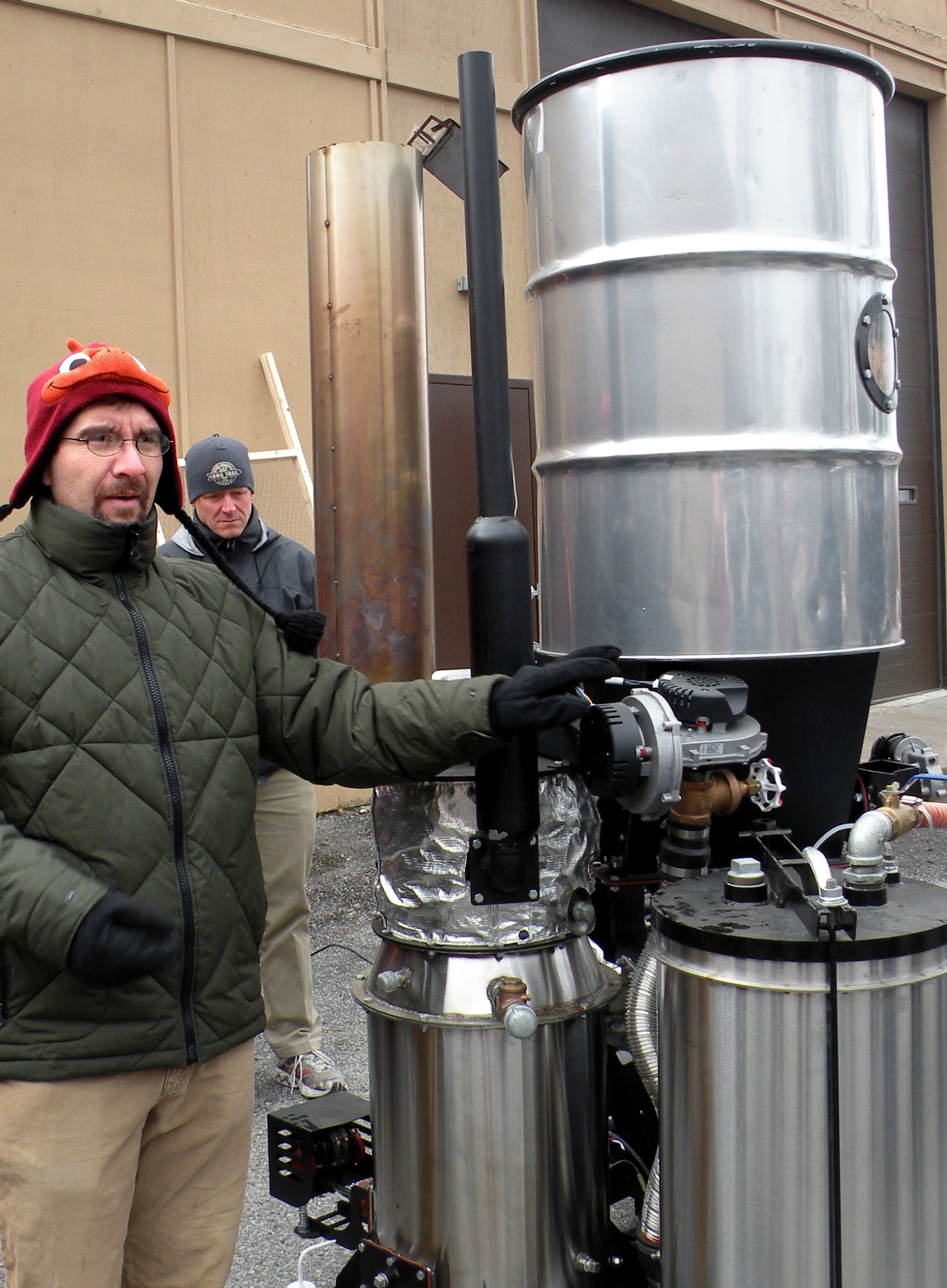New portable biomass power plant draws visitors to campus

Thirty visitors from as far away as New York and Guatemala recently journeyed to the Thomas M. Brooks Forest Products Center in February to see demonstrations of the Department of Sustainable Biomaterials’ new portable biomass power plant.
About the size of a Mini Cooper turned upright, the biomass power system generates electricity by burning wood chips, corncobs, manure, and other agricultural wastes. In demonstrations, Henry Quesada-Pineda, assistant professor of sustainable biomaterials in the College of Natural Resources and Environment, powered shop tools with the unit.
“There is increasing interest in the community and around the world, especially in off-grid situations, to learn more about how biomass energy production can be integrated into small-scale systems,” said Quesada-Pineda, a Virginia Cooperative Extension specialist who is also assistant director of Virginia Tech’s Center for Forest Products Business, as he fielded questions from international development consultants and forest-products industry managers during the demonstration.
The unit’s generator is powered by a three-cylinder combustion engine using syngas — a combination of nitrogen, carbon monoxide, and hydrogen produced by biomass reacting with steam at temperatures over 750 C. Virginia Tech’s unit, which produces 1 kilowatt hour for every 1.2 kilograms of biomass, is capable of generating 10 kilowatts, enough to power 100 100-watt light bulbs.
With a price tag of $18,000, the unit is not a cost-effective investment for most U.S. companies with access to electricity, Quesada-Pineda says, but his department’s research will seek to determine the optimal use for this renewable energy source.
This gasification process itself has been in use for years, Quesada-Pineda says. It was used in the mid-1800s to produce gas for streetlights and cooking, before being replaced by natural gas. Wood gasifiers powered thousands of European motor vehicles during World War II fuel shortages. Today, biomass power plants represent the nation’s second largest source of renewable energy in terms of capacity, after hydroelectric.
The term “biomass” encompasses diverse fuels derived from timber, agricultural, and food processing wastes as well as fuel crops grown for electricity generation and can even include manure. Future department research will analyze the effectiveness and emissions output of the many different types of biomass feedstocks available, including sugar cane and coconut shells.
In addition to research, the biomass power unit will be used to support teaching efforts, giving students the opportunity to familiarize themselves with this emerging technology, and to power entrepreneurial projects of the department’s student-run Wood Enterprise Institute.
Those interested in seeing a demonstration of the portable power plant can email Henry Quesada-Pineda or call 540-231-0978.




